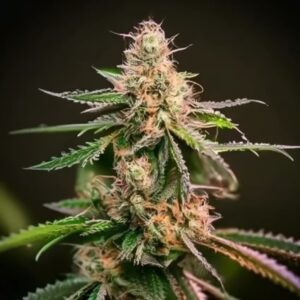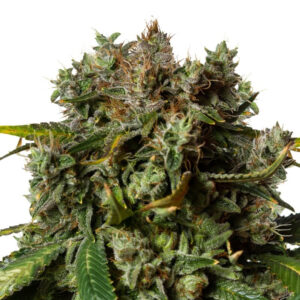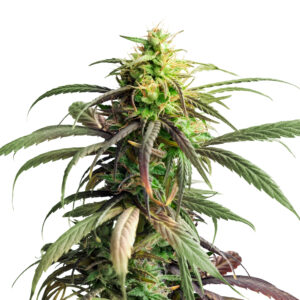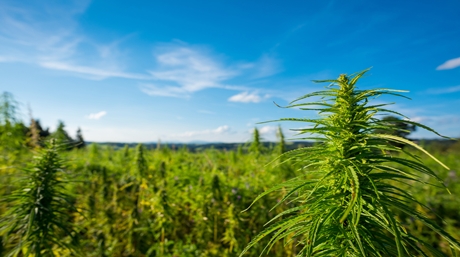With the burgeoning legalization and acceptance of cannabis around the world, we’re witnessing an extraordinary evolution in the number of marijuana strains available. Despite the overwhelming diversity, they predominantly fall into two fundamental categories: hybrid and landrace strains. Acquiring knowledge about these classifications, their distinguishing traits, and origins, is key to gaining a comprehensive understanding of the wide array of cannabis offerings that grace the contemporary market.
The cannabis taxonomy is a complex tapestry woven over centuries of natural growth and decades of human cultivation. It reflects the plant’s evolution as it has adapted to various environmental factors, human needs, and cultural influences. The two broad categories of weed strains, hybrid and landrace, embody this evolution, each representing a different facet of the plant’s rich history and versatility.
Landrace strains symbolize the earliest forms of cannabis, having evolved naturally over centuries in their distinct geographical regions. Each landrace strain carries a unique set of characteristics—be it their growth pattern, aroma, flavor, or effects—shaped by the specific climatic conditions, soil composition, and other environmental factors of their native habitat. They represent the cannabis world’s ancestral lines and are revered for their genetic purity and robustness.

On the other hand, hybrid strains embody the advances in cannabis cultivation techniques and scientific understanding of the plant’s genetics. Breeders develop hybrid strains by intentionally crossbreeding different cannabis varieties, often including landrace strains, to combine or enhance specific traits. This results in a multitude of hybrid strains, each engineered to provide unique effects, flavors, and growth characteristics that cater to diverse consumer preferences and medical needs.
Thus, comprehending the distinction between hybrid and landrace strains provides not only a wider perspective on the expansive cannabis assortment but also a deeper appreciation of the plant’s incredible adaptability and the complexities involved in its cultivation.
Hybrid cannabis strains, representing the majority of strains currently available on the market, are a direct reflection of the dynamic and innovative nature of the weed industry. Their dominance is a testament to the sophisticated breeding techniques and the sheer dedication of breeders and growers to meet consumers’ diverse needs.
The practice of cannabis cultivation is characterized by constant evolution, fueled by the perpetual pursuit of creating the “ultimate” strain. The birth of hybrid strains is a consequence of this relentless drive for perfection. By crossing various strains, breeders are able, to manipulate the genetic makeup of the plant, targeting specific traits such as yield, potency, flavor, and resistance to pests and diseases. At the same time, they aim to reduce unwanted features such as lengthy flowering periods or susceptibility to mold.
The result is a stunning array of hybrid strains, each with its unique combination of characteristics. This dazzling diversity caters to an ever-growing market, with strains tailored for medical patients seeking relief from specific symptoms, recreational users seeking particular effects, and cultivators seeking specific growth characteristics. In this way, the hybridization process brings together the best of all worlds, resulting in strains optimized for various needs and preferences.
While it’s true that many hybrid strains have a landrace lineage, it’s crucial to understand that hybrids are a category unto themselves. They are not landrace strains, heirloom strains, or phenotypes, but rather unique products of meticulous selective breeding processes.
Hybrid strains showcase the incredible skill and scientific knowledge of breeders. Each hybrid strain is developed with a specific purpose in mind, targeting the needs and demands of the consumer market. Some strains might be bred for their psychoactive effects, offering uplifting, calming, or balanced experiences. Others might be celebrated for their unique terpene profiles, delivering distinct flavors and aromas that add another layer of enjoyment to the cannabis experience. Still, others might be appreciated for their growth traits, thriving in specific conditions or delivering hefty yields.
This ability to tailor strains to fulfill certain needs and preferences is part of the magic of hybrid cannabis. By understanding the science of marijuana genetics and cultivation, breeders can create strains that deliver a personalized marihuana experience to the consumer, enhancing the plant’s therapeutic and recreational potential.
Landrace marijuana strains serve as a stark contrast to the cultivated diversity of hybrid strains. They represent the most ancient and natural forms of weed, having evolved over centuries within specific geographical regions, and adapting to the unique environmental conditions of their native habitats.
Landrace strains are often viewed as the building blocks of the cannabis genome, the original strains from which all others have descended. They’ve evolved naturally in response to their environment, developing distinct characteristics suited to their specific regions.
Identifying landrace strains is generally straightforward, thanks to their regional naming conventions. For instance, the severe mountainous climates of Afghanistan and Pakistan have birthed potent Indica strains, adapted to survive harsh, cold conditions. These strains, such as Afghani and Hindu Kush, are known for their robust nature and high resin production, likely an adaptation to protect the plant in its harsh native environment.
On the other hand, the tropical climates of Jamaica, Mexico, and Africa have given rise to Sativa strains. These plants, including strains like Acapulco Gold and Durban Poison, have adapted to their warm, sunny environments, resulting in taller plants with longer flowering times, producing aromatic buds known for their uplifting effects.
This geographical diversity highlights the adaptability of cannabis, showing how the plant’s characteristics can change dramatically in response to its environment. This understanding adds another layer of appreciation to the rich history and complexity of the pot plant.
Below is a list of some renowned landrace strains, alongside their countries of origin:
From Afghanistan and Pakistan: Notable Indica strains from this region include Afghani, Lashkar Gah, Hindu Kush, and Mazar-I-Sharif.
From Mexico: Acapulco Gold, a famous Sativa strain, is native to this region.
From South and Central America: Renowned strains like Panama Red and Colombian Gold hail from here.
From Asia: Aceh, Thai, and Chocolate Thai are popular strains originating from this region.
From Africa: Strains like Swazi Gold, Durban Poison, Kilimanjaro, and Malawi are some of Africa’s prized landrace strains.
From Jamaica: Lamb’s Bread and King’s Bread are two well-known Jamaican strains.
This list, however, is just the tip of the iceberg. There are countless landrace strains worldwide, and many remain undiscovered. As you explore the world of cannabis, you may even stumble upon a unique landrace strain yourself.
To conclude, both hybrid and landrace strains play pivotal roles in the vibrant tapestry of cannabis strains. The former brings the science and creativity of weed breeding to the forefront, offering a tailored experience. The latter connects us to the rich and ancient history of marijuana, demonstrating its adaptability to diverse environments worldwide.
If you’re interested in exploring these unique strains yourself, our seed bank is an excellent place to start. It houses an array of high-quality weed seeds, offering a curated selection of both hybrid and landrace strains for your discovery. Embrace this opportunity to explore the depth and breadth of the cannabis world, one strain at a time.













Related Posts

When it comes to choosing cannabis strains, there are many factors to consider. But one of the most important is where the strain originates from. African strains, for example, are known for their unique flavors and potent effects. And with so many different strains to choose from, there’s sure to be one that’s perfect for you.

All pure cannabis strains are originally from a certain region. Read this article to learn more about cannabis landrace strains.

There is pretty much a strain for everything now and I think that it is pretty fantastic how cannabis has been developed so much that we can now pick and choose how we want to feel and then select a strain from there. Different people have different uses for cannabis, some like it to make them sleepy, others use it to stimulate their appetite, some even use it to enhance their concentration. However, if all you’re looking for is to feel good and maybe a little bit giggly, then this is the article for you. Here are a few of my favorite strains for inducing euphoria: